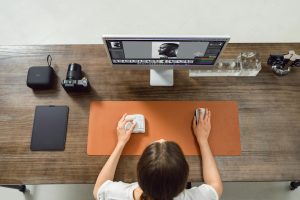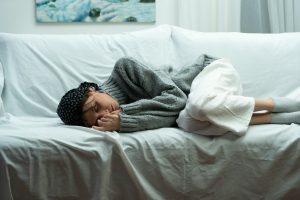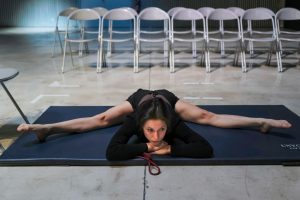Knowing Your Body Composition: Going Beyond the Numbers on the Scale

Knowing Your Body Composition: Going Beyond the Numbers on the Scale
The Reasons Why the Scale Doesn’t Tell the Correct Story
When it comes to determining their level of fitness, people have relied on the bathroom scale for many years. Despite the fact that body weight might provide a basic idea of change, it does not reflect what is actually occurring inside your body. It’s possible that you could lose weight but still have a high proportion of body fat, or that you could gain weight but get leaner and stronger.
When it comes to health, strength, and overall fitness, body composition is a much more accurate depiction of these aspects than other measurements. Instead of allowing yourself to be mislead by the numbers on a scale, having this understanding enables you to concentrate on what really important.
Composition of the Body: What Is It?
The term “body composition” refers to the proportion of various types of tissues that are present in an individual’s body. This includes the primary components:
- Muscle, bones, water, organs, and connective tissues compose the components of lean mass.
- Fat mass refers to the overall quantity of fat that is present in the body, which includes both active and stored fat.
- In contrast to body weight, which takes into account all aspects of a person’s body, body composition differentiates between fat mass and lean mass, thereby assisting you in determining whether or not changes in weight are healthy.
The Constituents of the Body’s Fat
Every type of fat is not created equal. Within the body, fat is stored in two primary forms:
The minimum amount of fat that your body requires for hormone production, organ preservation, and brain function is referred to as essential fat. The average amount of essential fat for women is between 10 and 13%, while the amount for men is between 2 and 5%.
The quantity of fat that is stored in adipose tissue for the purpose of providing energy. While a modest amount is considered healthy, an excessive amount can raise the risk of developing an illness.
After gaining an understanding of these distinctions, you will be better able to create fitness goals that are attainable and avoid falling into the trap of simply “losing weight.”
Why the composition of the body is more important than weight
There is no way for the scale to determine whether your body is losing muscle, fat, or water. There is a significant difference in appearance and performance between a person who weighs 180 pounds and has 15% body fat and another person who weighs the same but has 30% body fat.
Principal reasons why body composition is important:
- When compared to weight alone, it provides a more accurate reflection of your actual fitness level.
- It assists you in monitoring the ratio of muscle build to fat reduction.
- It contributes to a better knowledge of metabolic health and the equilibrium of energy.
It contributes to improved weight management over the long run.
You are able to establish more meaningful goals, such as increasing your power or decreasing your fat percentage, if you concentrate on your body composition rather than chasing after random numbers.
The Importance of Muscle in the Composition of the Body
Not only is muscle important for appearance, but it also plays an important part in the body’s metabolism and overall health. When compared to fat tissue, muscle tissue is metabolically active, which means that it burns more calories while standing still. Your metabolism will speed up and it will be much simpler for you to maintain a healthy weight if you have a greater amount of lean muscle.
In addition, building muscle:
- Contributes to increased bone density and joint stability.
- Enhanced posture and functional movement are both benefits.
- Enhances the avoidance of injuries and promotes healthy aging.
- Because of this, strength training is necessary for everyone, regardless of their current level of fitness or their desired outcome.
Methods for Determining the Body Composition
When compared to body weight, body composition entails the utilization of more sophisticated instruments for precise measurement. In the year 2025, the following are some ways that are commonly used:
- Bioelectrical Impedance Scales (BIA) are a type of scale that may be found in many smart scales. These scales can assess fat and lean mass by sending a harmless electrical signal through the body.
- DEXA scans are the most accurate method available; they evaluate bone density, muscle density, and fat density.
- Skinfold Calipers are instruments that measure subcutaneous fat by pinching or pricking certain spots on the body.
- Using hydrostatic weighing, which is less frequent but more accurate than other methods, the body is submerged in water to determine its density.
- Three-dimensional body scanners offer a visual investigation of the changes in shape that occur over time.
Certain approaches are more accurate than others; but, consistency is of the utmost importance; in order to make reliable comparisons, it is essential to track changes using the same way each time.
Acquiring Knowledge on “Healthy” Average Body Fat Percentages
Different genders, ages, and levels of physical activity all have different ideal percentages of body fat.
Guidelines for general use:
- 10–20% of men, including 6–13% of athletes;
- 18–28% of women, with 14–20% of their athletes
In spite of the fact that these ranges are not universally applicable, there are certain people who naturally function well at slightly higher or lower percentages, based on their genetics, metabolism, and lifestyle choices.
The Importance of Monitoring The Progress in the Appropriate Manner
You should concentrate on progress markers other than weight if your objective is to improve your body composition.
- The percentage of body fat shifts on a regular basis.
- Increases in muscle mass (as measured by strength improvements or measures).
- A person’s physical appearance and the fit of their clothing.
energy levels, attitude, and the quality of sleep we get.
It is important to keep in mind that gaining muscle might cause your weight to increase even as your body grows leaner and healthier. It is for this reason that photographs, measurements, and the monitoring of strength provide a more accurate picture of progress.
Composition of the Body Regarding Nutrition
Your diet is one of the most significant factors that determines the makeup of your body. Getting the appropriate nourishment can help you lose weight while maintaining your muscular mass.
Principal principles of nutrition:
First and foremost, consume an adequate amount of protein to both preserve and grow muscle (0.8–1.0 grams per pound of body weight).
- For optimal levels of energy and hormones, a balanced macronutrient intake should consist of both healthy fats and complex carbohydrates.
- Steer clear of excessive deficits: Insufficient calorie intake can lead to the loss of muscle and a slowed metabolism.
- It is important to drink plenty of water because it helps the metabolism, muscle function, and healing.
- It’s not about how much food you consume; it’s about how you consume it.
Exercise for the Purpose of Achieving Optimal Body Composition
A combination of strength training, cardiovascular exercise, and flexibility training is the most effective workout plan for improving body composition.
Technique that is recommended:
- Strength training should be performed three to four times per week in order to raise resting metabolic rate and build lean muscle.
- Cardio: two to three days per week of high-intensity interval training (HIIT) or moderate-intensity cardio with the purpose of maintaining a healthy heart and burning calories.
- Stretching and mobility are important for preventing injuries and maintaining consistency over the long term.
- Results that are long-lasting are determined by consistency, not intensity.
The Importance of Slumber and Recuperation
An excessive amount of training can have a detrimental effect on body composition by elevating stress hormones such as cortisol, which encourage the store of fat and the breakdown of muscle. Make rest days, sleep, and active recovery your top priorities in order to give your body the opportunity to mend and adapt.
Suggestions for the most effective recuperation:
- Every night, make sure you get between seven and nine hours of decent sleep.
- Prepare for one day of complete rest each week.
- To alleviate stress, try practicing mindfulness or relaxation techniques.
- The true metamorphosis of the body takes place during the recovery process.
Redefining Success Beyond Numbers Through the Lens of You
A mental shift is just as important as a physical one when it comes to improving body composition. Building a physique that is not only capable of performing effectively but also feels good and lasts a lifetime is the objective, not only to reduce one’s weight.
Take note of:
- You should focus on how your body feels rather than what the scale says.
- Enhancements in strength, vitality, and endurance are being made.
- Building habits that are durable rather than focusing on achieving results quickly.
- Aesthetics are something that naturally follows when you prioritize health and function.
Not only is your body a dynamic system consisting of muscle, fat, water, and energy, but it is also more than just a number on a scale. The measurement of your body composition provides you with a more accurate picture of your health and progress than your weight alone can.
It is now simpler than ever before to measure, track, and improve your composition by engaging in consistent exercise, maintaining a balanced diet, and recovering in an intelligent manner in the year 2025, thanks to the technology and knowledge that is currently available.
Give up allowing the scale to determine your level of success. To make genuine growth, one must first internalize the qualities of being stronger, healthier, and more self-assured.








